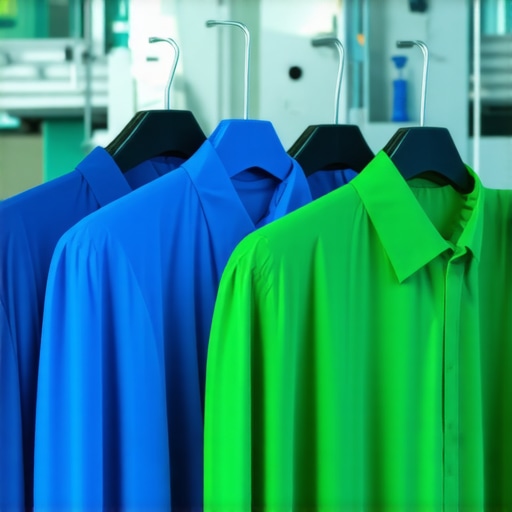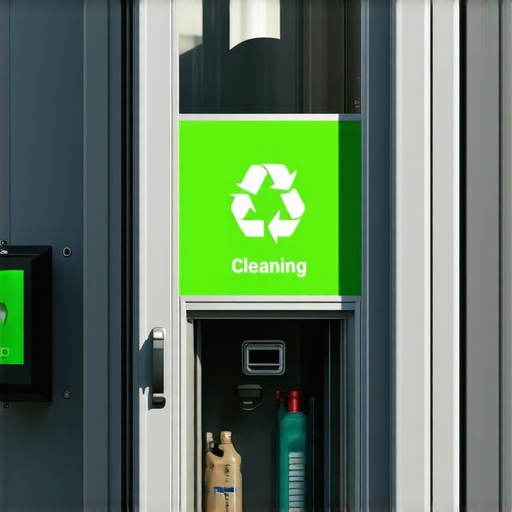Discovering Quality and Eco-Friendly Dry Cleaning Near Me
Living in Tampa, I’ve always sought trustworthy dry cleaning services that combine affordability with environmental consciousness. My quest began when I needed to get my favorite suit cleaned before an important event. I was overwhelmed by options but wanted a service that wouldn’t hurt my budget or the planet.
My First Encounter with Lutz & Tampa’s Best Dry Cleaners
After some research, I found a local dry cleaner known for its eco-friendly solutions and affordable prices. Their commitment to green fabric care, as highlighted on their eco-friendly cleaning practices, immediately caught my attention. I decided to give them a try, and the experience exceeded my expectations.
Why I Switched to Eco-Friendly Dry Cleaning
Switching to eco-friendly services wasn’t just about saving the environment—it also meant better care for my clothes. I learned that green solvents used in their cleaning process are gentle yet effective, preserving fabrics longer. Plus, I appreciated their transparency and dedication to sustainable practices, which align with my values.
The Convenience of Affordable Services with Pickup & Delivery
One of the standout features was their pickup and delivery option, making my busy life easier. I could schedule pick-up from my home in Lutz or Tampa, and my clothes were returned spotless and fresh. This convenience made me realize that quality dry cleaning doesn’t have to be expensive or complicated.
What Makes a Dry Cleaner Truly Trustworthy and Eco-Friendly?
I often wonder how consumers can identify truly eco-friendly dry cleaners. It’s essential to look for certifications, transparent practices, and positive reviews. As per the insights shared by industry experts, choosing a provider that openly discusses their cleaning methods and environmental impact ensures you’re making an informed choice. For more on sustainable fabric care, check out this resource.
If you’re in the Tampa or Lutz area, I highly recommend exploring these services. They’ve made my life easier while allowing me to contribute to a greener planet. Feel free to share your experiences in the comments or ask questions about selecting the right dry cleaner for your needs!
What Are the Key Indicators of a Truly Eco-Friendly Dry Cleaner?
As an industry expert, I often emphasize that genuine eco-friendly dry cleaning goes beyond green marketing slogans. When evaluating local providers, look for certifications from reputable environmental organizations, such as Green America or Eco Label, which verify sustainable practices. Transparent communication about cleaning solvents, waste management, and energy use demonstrates accountability. Reading reviews and testimonials can also reveal whether a dry cleaner maintains consistent eco-friendly standards, as highlighted in this detailed guide.
Practical Strategies for Selecting the Best Green Dry Cleaners Near You
Beyond certifications, consider the cleaning technologies employed. For instance, many eco-conscious cleaners use liquid silicone or hydrocarbon solvents instead of traditional perchloroethylene (perc), which is toxic and hazardous. These alternatives are gentler on fabrics and safer for the environment. Additionally, inquire about their waste disposal methods and energy-efficient equipment. An experienced professional also recommends checking if they participate in recycling programs for hangers and plastic bags, further reducing ecological impact.
The Practical Benefits of Choosing Eco-Friendly Services
Opting for environmentally responsible dry cleaning not only helps the planet but can extend the life of your garments. Gentle cleaning agents and methods prevent fabric deterioration, saving you money in the long run. Moreover, eco-friendly cleaners often adopt innovative techniques that reduce water and energy consumption, aligning with sustainable living goals. For example, some Tampa-based providers incorporate ozone or ultrasonic cleaning systems that deliver superior results with minimal environmental footprint. To explore such options, visit this resource.

Can I Rely on Customer Reviews and Industry Certifications to Trust a Dry Cleaner?
Absolutely. Reviews from local residents and industry certifications serve as valuable indicators of a dry cleaner’s commitment to eco-friendly practices. As I’ve seen firsthand, a consistent positive reputation often correlates with genuine sustainability efforts. For added assurance, look for third-party certifications, which validate claims of green fabric care. In my experience, transparent companies willing to share detailed information about their cleaning processes tend to be the most trustworthy and effective.
Share Your Experience and Discover More Eco-Friendly Dry Cleaning Tips
If you’ve found a Tampa or Lutz dry cleaner that prioritizes sustainability, I encourage you to share your insights in the comments. Your feedback can help others make informed choices. For those interested in expanding their knowledge, I recommend exploring our comprehensive guides on eco-friendly fabric care and sustainable garment maintenance.
Unraveling the Layers of Green Fabric Care: A Personal Reflection
As I continued exploring Tampa’s eco-friendly dry cleaning scene, I realized that my initial understanding, though well-intentioned, only scratched the surface of what sustainable garment care truly entails. It’s one thing to choose a cleaner based on certifications or eco-labels, but deeper down, I began questioning how these principles translate into everyday practices and long-term sustainability.
What Do Certifications Really Guarantee? A Personal Take
Certifications from reputable organizations like Green America have become my personal benchmarks. Yet, I’ve learned that not all certifications are created equal; some are more rigorous or transparent than others. For example, a dry cleaner might display a green badge, but how do they verify their waste management or energy use? I found that engaging directly with providers—asking about their specific practices—often yields richer insights than any badge alone. This approach aligns with industry insights shared by this detailed guide, which emphasizes transparency as a core value.
How Can Consumers Advocate for Greater Sustainability in Garment Care?
From my experience, advocating isn’t just about asking questions—it’s about fostering relationships and encouraging continuous improvement. When I talk to my local dry cleaner, I express my appreciation for their efforts and suggest areas for enhancement, like recycling hangers or reducing water consumption. Over time, I’ve noticed that such conversations can lead to tangible changes, especially when customers collectively voice their expectations. This personal level of engagement can often be overlooked but is vital in pushing the industry toward more responsible practices.
Nuances in Eco-Friendly Technologies: Beyond the Surface
Delving into the technological side, I discovered that eco-friendly solvents, such as liquid silicone and hydrocarbons, aren’t just marketing buzzwords—they’re part of a broader shift toward gentle, yet effective, fabric care. However, the real nuance lies in their application. For instance, some cleaners use ultrasonic cleaning methods, which I found fascinating, as they can remove dirt with minimal water and energy. Incorporating such advanced techniques demonstrates a commitment that goes beyond compliance, reflecting a genuine pursuit of innovation in sustainable garment care. For those interested, exploring this resource offers valuable insights into these cutting-edge practices.

Is It Possible to Achieve Absolute Sustainability? A Personal Dilemma
I often ponder whether absolute sustainability is a realistic goal or an aspirational ideal. While I admire Tampa’s progressive cleaners, I recognize that every choice—be it energy source, waste disposal, or chemical use—has complexities. For example, even the most eco-conscious solvent still requires energy to produce and process. This realization humbles me and encourages continuous learning. It also invites a broader reflection on how individual choices, combined with systemic industry changes, can collectively make a difference. Engaging with local providers, sharing knowledge, and supporting innovation seem to be the most practical steps I can take today.
Your Turn: Share Your Journey Toward Sustainable Garment Care
If you’ve navigated Tampa’s eco-friendly dry cleaning options or have insights into sustainable practices, I invite you to share your experiences. Your stories not only enrich the community but also inspire ongoing dialogue about responsible garment care. For further exploration, I recommend reviewing our comprehensive guides on eco-friendly fabric care and sustainable fashion tips. Together, we can continue to learn and evolve in our approach to caring for our clothes and the planet.
Beyond the Surface: Exploring Innovative Technologies in Green Fabric Care
As my journey into Tampa’s eco-conscious dry cleaning landscape deepened, I discovered that the industry is continuously evolving with groundbreaking technologies that promise both sustainability and superior garment care. For instance, the adoption of ultrasonic cleaning systems, which use high-frequency sound waves to gently dislodge dirt particles, significantly reduces water and energy consumption while maintaining pristine results. This advanced method exemplifies how innovation can align with eco-friendly principles, offering a compelling alternative to traditional procedures.
The Significance of Industry Certifications: An Expert’s Perspective
While certifications from reputable organizations such as Green Seal or EcoLabel serve as vital benchmarks, I’ve come to appreciate that their true value lies in the transparency and rigor of the certification process. For example, a dry cleaner displaying these badges must adhere to strict environmental standards, including responsible waste disposal and the use of non-toxic solvents. Engaging directly with providers—asking detailed questions about their certification criteria—often reveals their genuine commitment to sustainability, which is far more reassuring than mere logos. For an in-depth understanding, consult this authoritative guide.
How Can Consumers Advocate for Industry-Wide Sustainability?
My experience has shown that consumers wield significant influence through informed advocacy. By voicing appreciation for eco-friendly practices and suggesting improvements—such as participation in recycling programs or energy-efficient upgrades—we can foster a culture of continuous betterment. Building relationships with local providers not only enhances trust but also encourages transparency and accountability. Participating in community forums or leaving detailed reviews can amplify these efforts, ultimately inspiring industry-wide shifts toward more sustainable operations.
Delving into the Nuances of Chemical Alternatives
One area that captivates my interest is the development and application of alternative cleaning solvents. Liquid silicone and hydrocarbon-based solutions, which are less toxic than traditional perchloroethylene (perc), represent a pivotal move toward safer garment care. However, their effectiveness hinges on precise application and understanding of fabric compatibility. Moreover, integrating these solvents with emerging cleaning techniques, like ozone or ultrasonic systems, can maximize both environmental benefits and cleaning efficacy. For a comprehensive overview, explore this detailed resource.
The Ethical Dilemma: Striving for Absolute Sustainability
Despite the remarkable strides in eco-friendly fabric care, I grapple with whether absolute sustainability is an attainable goal. Every technological or chemical choice involves trade-offs—energy consumption in manufacturing, waste generation, or chemical impacts—that complicate the pursuit of perfection. Nonetheless, recognizing these complexities fosters humility and a commitment to incremental progress. Supporting innovation, engaging with providers, and staying informed are vital steps in this ongoing journey, shaping a future where responsible garment care becomes the norm rather than the exception.
Engage and Explore: Join the Conversation on Sustainable Garment Care
If you’ve navigated Tampa’s eco-friendly dry cleaning scene or possess insights into sustainable practices, I invite you to share your experiences. Your stories can inspire others and contribute to a collective effort toward responsible consumption. For those eager to deepen their understanding, I recommend exploring our comprehensive guides on eco-friendly fabric care and innovative cleaning techniques. Together, we can forge a path toward a cleaner planet, one garment at a time.
Things I Wish I Knew Earlier (or You Might Find Surprising)
1. Certifications Matter More Than They Seem
Initially, I thought a green badge was enough, but I learned that some certifications are more rigorous than others. Engaging directly with dry cleaners about their practices revealed genuine commitment beyond just logos, which made me more confident in my choices.
2. Innovative Technologies Can Make a Difference
Discovering ultrasonic or ozone cleaning methods opened my eyes to how advanced tech can reduce environmental impact while still providing excellent results. It’s exciting to see how industry innovation aligns with sustainability goals.
3. Transparency Is Key
When a dry cleaner openly shares their cleaning processes, waste management, and energy use, it’s a strong sign of integrity. I now prioritize providers who are transparent about their eco-friendly practices, which makes me feel better about supporting them.
4. Customer Reviews Are Revealing
Reading reviews from local Tampa residents helped me identify trustworthy eco-friendly dry cleaners. Consistent positive feedback gave me peace of mind that their practices are both effective and responsible.
5. The Small Details Count
Asking about recycling hangers, plastic use, and energy-efficient equipment showed me how even small actions contribute to sustainability. I appreciate cleaners who pay attention to these details.
Resources I’ve Come to Trust Over Time
- Green America: Their certification standards helped me understand what genuine eco-friendly practices look like, and I recommend exploring their resources for sustainable business practices.
- Eco Label: This organization provides clear labels that I use as a quick guide when choosing dry cleaners, ensuring their standards align with my values.
- Industry Expert Articles: Articles on their site and other trusted sources deepen my understanding of green fabric care and innovative cleaning methods.
Parting Thoughts from My Perspective
Choosing eco-friendly dry cleaning near me in Tampa has become more than just a convenience; it’s a way to live more sustainably and care for my clothes in a gentle, responsible manner. I’ve learned that transparency, certifications, and innovative practices matter greatly. If you’re considering making the switch, I encourage you to ask questions, read reviews, and look for genuine commitments to sustainability. It’s inspiring to see how small, mindful choices can contribute to a healthier planet. If this resonates with you, I’d love to hear your thoughts or experiences—feel free to share in the comments or explore more about eco fabric care on this resource. Together, we can make a difference, one garment at a time.
